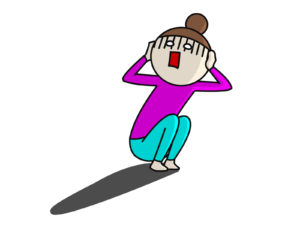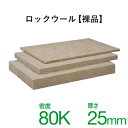
ピアノを含めて、楽器の演奏をする場所はスタジオや体育館だけとは限りません。
「自宅で楽器を弾きたいけど、音が響きそう」と悩んでいる方も少なくないでしょう。
今回は自宅のお部屋に防音効果をもたせる方法を紹介します。
併せて、賃貸アパートや賃貸マンションでもできる防音加工を紹介します。
楽器の他にも、プライバシーの観点からお部屋を防音室にしたい方も必見です。
防音加工にかかる費用
最初に防音室を作るためにかかる費用の説明をします。
なぜなら、きちんとした防音処理をするためには、決して安くおさまらないからです。

一般的に楽器用のお部屋として業者に防音リフォームをお願いすると、8畳のお部屋で200~400万円ほどします。
もちろん程度にもよります。
例えばシアター室を作る目的での防音リフォームであれば、その半額ぐらいで収まる場合があります。
プロにお願いすることで、空間をしっかりと把握した上でお部屋に合った適切な防音処理をしてくれます。
・・・とはいえ、非常に高いですね。
お金に余裕がある方でなければ、これほどまでのお金を払えないことでしょう。
「この金額を出しても構わない」という方は、ぜひともプロのリフォーム屋さんにお願いされてください。
そして「これ程は出せないけど、数万円~数十万円は出せる」という方は、この先の記事をお読みください。
最後に、「数万円も出せない」という方は、残念ながらお部屋の防音処理を諦めてください。
中途半端にお金をかけても、残念ながら満足のいく防音室にはなりません。
それでも楽器を弾きたい場合は、ヘッドフォンで聞きながら演奏できる電子ピアノやキーボード、エレキギターや電子ドラムを購入されることをおすすめします。
お部屋を防音にするために押さえる4つの場所
お部屋を防音にするために処理をする場所は4つあります。
それは
壁・天井・床・ドア(窓)
です。
よくある失敗は窓やドアだけに防音加工をして、満足してしまうパターンです。

確かにホームセンターや楽器屋さんには窓やドアの隙間に貼る断熱・防音シートが多く販売されています。
しかし、これだけやっても不十分なのです。
音は四方八方に広がり、その振動は床にも天井にも伝わります。
中途半端に防音加工をしても意味がありません。
きちんとした防音室を作りたいのであればこの4つをしっかりと押さえるようにしてください。
4つの防音加工について順番に説明していきます。
壁
壁に防音効果をもたせる最も簡単でコスパの良い方法は、壁の量を増やすことです。
経験されたことがある方ならわかると思いますが、よくある安めの賃貸マンションやアパートは、隣の部屋の物音が細かいものまで聞こえることがあります。
例えばテレビの音が丸聞こえだったり、咳払いが聞こえてきたり、また上の階の足音がうるさく聞こえる場合です。
この原因の多くは純粋に壁が薄いことです。
つまり「壁が薄いなら厚くすればいいじゃん」というのがこの考え方です。
なによりこの方法のメリットは音の広がりや反射を考える必要がないことです。
壁を追加することで、安価なコストで不要な音の伝達を減らすことができます。
では何で壁を厚くしていけば良いのか、それぞれの吸音材のメリット・デメリットを紹介します。
また、今回紹介する素材は壁の他にも天井や床にも使いますので、しっかり読んで参考にされてみてください。
ポリエステル系
もっともおすすめする素材はこのポリエステル系の吸音材です。
ポリエステル系の吸音パネルは振動を細かい繊維がしっかり吸収し、ピアノを含めた楽器の低音から高音まであらゆる音を外に漏らしにくくします。
また断熱効果もあり、お部屋の環境としては一石二鳥です。
さらに色や形に特徴のあるポリエステルであれば、そのまま貼っても壁紙として違和感なく仕上がります。
何よりこの素材は軽いため、貼付けしやすいことが特徴です。
ただし、隙間を徹底的になくした「気密性の高いお部屋」であればあるほど、音が反響して「ふわ~ん」とエコーが掛かったような状態になることがあります。
ロックウール
ロックウールとは、玄武岩などの鉱物を高音で溶かし、細い繊維状にして冷やした人工の繊維です。
こちらもポリエステル系と同様に、低音から高音まであらゆる音を外に漏らしにくくします。
軽量で貼り付けしやすいのですが、難点が一つあります。
それは、直接肌に触れるとチクチクして痛いことです。
そのため、ロックウールを壁に貼ったあとは、その上から壁紙を貼らなくてはいけません。
また、繊維が細かいため、飛散する恐れもあります。
ロックウールの上から貼った壁紙が万が一破れた場合、中にはいっているロックウールが飛散し、肌がかゆくなることもあります。
逆に言えば、きちんと壁紙を貼り、手入れをすれば、比較的安価で流通していますので、選択肢の一つとしてアリだと思います。
グラスウール
グラスウールの名はグラス=ガラス、ウール=繊維です。
その名の通りガラスの繊維を集めたものです。
防音・断熱効果があるだけでなく、熱に非常に強いため、船や冷蔵庫、パソコンなどにも使用されています。
ガラスと聞くと鋭利で危ないイメージですが、繊維状のものはそんな事はありません。
ただし、ロックウールと同じく直接触れるとチクチクしてしまいます。
覚えておきたい注意点として、空気中の水分を含んでしまうことがあり、それが原因で重くなり、ズレ落ちてしまう危険性があることです。
価格は安価ですが、きちんとコーティングされたものを正しく使うか、プロの業者にお願いするのがベストだと思います。
ウレタン
最後になりましたが、ウレタン系の防音材は近年もっとも一般的な防音素材です。
実物を見れば「あぁこれか」となる素材で、発泡スチロールの原料にも使われているものです。
軽量で、カッターなどでサクッと切ることもできるため、好きなサイズにすることができ、両面テープなどで簡単に貼り付けることができます。
一応注意点としては燃えやすいことです。タバコなど火気厳禁ですのでそこだけお気をつけください。
性能的には文句なしの防音材なのですが、欠点は他の素材に比べて価格が高いことが多いことです。
価格に余裕がある方であれば、こちらを使ったほうが良いでしょう。
安いものも多く販売されていますが、その多くは薄く、防音効果があまり期待できないものが多いです。
天井
天井の防音対策として、一番いい方法はまず「防音シート」を貼りネジ等で固定します。
その後「吸音材」を上から貼る方法です。
防音シートを貼る作業は力仕事になる上に危険を伴います。
また天井に軽く穴を開ける作業が発生しますので、防音効果は落ちますが、吸音材のみの使用でも個人的には構わないと思います。
防音シート
防音シートとは樹脂性のシートで、音を跳ね返す働きをしてくれます。
そのため、防音シート単独での使用は防音対策としては、ほとんど効果を発揮しません。
この防音シートは、その名の通りシートなので非常に薄いのですが、薄い割にかなり重たいです。
これを天井に固定するには両面テープでは落ちてくる危険性があります。
そのため、防音シートを固定するために長めのビスを打ち込む必要があります。
ビスを打ち込むことができるか下地を確認しておきましょう。
天井の種類によっては、ビスを打ち込むとボロっと割れる素材のものがあります。
軽く打ち込んで問題ないことを確かめてから行うようにしてください。
吸音材
吸音材に関しては、「壁」の項目で説明したとおりです。
状況にあった素材を選ぶようにしましょう。
ただし、壁と違って重力で落ちる可能性が高いですので、貼り付けには強力な粘着テープか接着剤を使うようにしましょう。
床
地下にお部屋がある方を除いて、楽器を弾くなら床の対策は必須です。
床から伝わる音は大きく分けて2種類あります。
1つめの音は、インパクトノイズと呼ばれます。
床を歩く際に聞こえるような直接床に響く音です。
これは、フロア全体に振動を発生させ、その振動はフロアは床を通って梁に入り、下の部屋の天井に通じます。
ピアノは床に接した楽器ですので、当然ピアノの脚から直接床に振動が伝わっていきます。
2つ目の音は、空気中の音です。
例えば、話したり笑ったり、テレビや音楽の音がこれに当たります。
ピアノの音はまさにこれで、弦から発せたれた音は空気中に分散します。
つまりピアノの場合、両方の対策をしなければなりません。
床に対して行うことは壁や天井と同様に、吸音材などを重ねていくことです。
遮音シート
まずは天井と同じく遮音シートです。
これにより、「空気中の音」を床下に伝わりにくくします。
天井と違い、重力で落下する心配はありませんので、ビスを打ち付ける必要はありません。
薄い両面テープなどで、床が凸凹にならないように敷き詰めましょう。
物によっては両面テープも必要ありません。
あくまでも平らにして、ピアノに影響を与えないようにシートを貼りましょう。
一番注意しなければいけないのは、石やセラミックタイルでできた床です。
これらの床に貼ったシートが均一になっていないと、反響して変な音に聞こえることがあります。
もしお部屋の床が石やセラミックタイルであれば、遮音シートを均一に貼ることに重点を置くようにしておきましょう。
また床が木目の付いたシートではない生の木のフローリングの場合には、カビにも注意しましょう。
もし床下から僅かな湿気が入り込む隙間があれば、そこから床と遮音シートの間にカビが発生する場合があります。
これを防ぐために、遮音シートを敷く前に「防虫・防カビシート」を敷くことをおすすめします。
防音カーペット
次にするのは吸音材なのですが、壁や天井と違い、ふわふわな素材だと人が歩きにくくなり、またピアノなどの楽器を安定させることができなくなります。
そこでおすすめするのが防音カーペットです。
防音カーペットとは、薄く伸ばした遮音材の上にカーペット生地をくっつけたものです。
目的が「カーペット」なため、はじめからきれいに水平になっています。
これを遮音シートの上に敷くことで、直接的な振動の「インパクトノイズ」を軽減させ、また吸音材の働きで「空気中の音」も伝わりにくくしてくれます。
購入の際に注意していただきたいことは、安物の「防音カーペット」と宣伝しているものは、通常のカーペットをただ厚くしただけのものが多いことです。
難しい用語で説明されているものが多いですが、要は「吸音材がついているかどうか」をよく見るようにしてください。
もちろんその吸音材も様々な種類が使われています。
前述の吸音材の種類を参考に、選んでみてください。
また、もともとカーペットを敷き詰めているお部屋の場合、その下に遮音シートを敷くだけでも構いません。
そもそもカーペットには音の分散を防ぐ効果もあります。
せっかくお部屋に合ったカーペットを無理に変える必要はありません。
一度そのまま使ってみて、あまりにも防音がなされていないようなときだけ防音カーペットを使ってみましょう。
ドア(窓)
ドアは部屋を防音するときに考慮すべき重要な要素です。
よくあるピアノなどの騒音問題の最も一般的な原因の1つがドアや窓なのです。
通常、ドアや窓の下や上、および横には隙間があり、部屋の音を部屋の外に漏らしています。
ドアや窓を完全に防音することは、膨大な時間と労力を要し、また最も難易度が高いことです。
とはいえ、これにばかり時間やお金をかけて入られません。
今回は、私が効率がいいと考えるやり方をいくつか紹介します。
防音ドア・防音窓
いきなりやや難易度というか後処理を含めて面倒なことです。
これはいっその事、「ドア・窓そのものを防音対策されたものに変えてしまえ」というものです。
ドアや窓にシートを貼って、少しでも防音処理する商品もありますが、正直言ってそれほど効果は見込めません。
なにより、ドアや窓の素材や厚みなど考慮することが多く、素人が行うには難易度が高いです。
ややお金はかかりますが、防音ドア・防音窓に変えてしまうほうが結果的にコスパは高いと思います。
もし金銭的に厳しいようであれば、前述の吸音材をドアに貼ってみましょう。
窓には、「防音ボード」と呼ばれる外付けのものがあります。
お部屋が暗くなってはしまいますが、ピアノの演奏中など、必要に応じて開け締めをすれば通常の窓も問題なく使うことができます。
隙間を埋める
最後にドアや窓の隙間を埋めます。
先程の「防音ドア」や「防音窓」を購入されていればコレは不要な場合が多いです。
こちらはホームセンターなどでもよく見かけますし、お部屋の断熱対策としてTVでも取り上げれられています。
単純に言えば隙間に貼るクッションシールです。
価格も他の防音対策費用に比べればかなり安価で手に入ります。
これを貼ることで隙間から漏れる音を抑制することができます。
購入の際はドアや窓の種類をよく見て、隙間の大きさを把握した上で購入するようにしてください。
また窓の隙間を埋める際は、結露したときのことを考えて「防水」仕様のものをおすすめします。
















コメントを残す